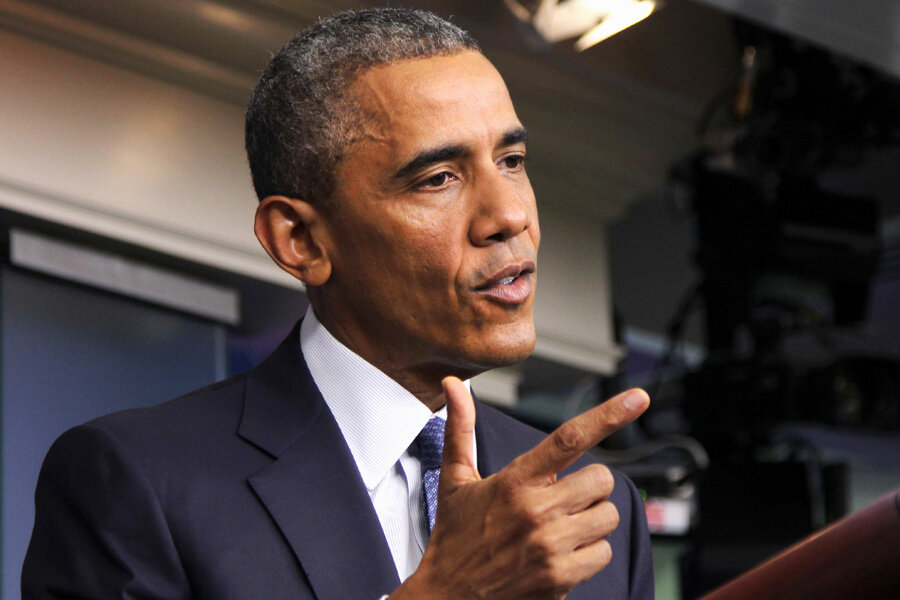Is Obama dragging Democratic Party down?
| Washington
President Obama’s job approval rating isn’t great. It’s been underwater for over a year and currently stands at 41 percent favorable and 53 percent unfavorable, according to a three-day rolling average by Gallup. Is that an ominous sign for Democrats heading into the 2014 midterm elections?
The short answer to that question is "yes." The longer answer is “yes, but Mr. Obama’s relative unpopularity is not the only rock dragging down Democratic chances of holding their Senate majority."
First, the predictions: Right now, the consensus among big-time forecasters is that odds are good the Senate will swing the GOP’s way. The New York Times “Upshot” calculates that Republicans have a 68 percent chance of capturing the Senate. The Washington Post “Election Lab” puts that figure at 58 percent. University of Virginia professor Larry Sabato’s “Crystal Ball” rates the most likely Senate outcome a Republican gain of six or seven seats, giving them a small majority.
That doesn’t mean it’s a sure thing that Sen. Mitch McConnell (R) of Kentucky will fulfill his dream of becoming majority leader. These forecast numbers leave lots of room for the GOP to fall short, which might ignite a poisonous round of intramural recriminations. But that’s a story for another day.
Obama’s sagging numbers are one big reason things stand as they do, electorally speaking. As Scott Clement of The Washington Post “Fix” political blog noted Tuesday, the president is in essence on the ballot, even if his name isn’t. Political science research shows an increasingly tight relationship between presidential job approval and votes cast for Senate candidates.
In 2012, 90 percent of voters who cast a ballot for a Democratic Senate candidate approved of Obama, according to research carried out by Emory University political scientist Alan Abramowitz. Eighty-two percent who voted for Republican candidates disapproved of the president’s job performance. That’s a partisan consistency that has been steadily on the rise since 1972.
Furthermore, in some of the tossup states key to the Senate's control, Obama’s more unpopular than his national average. In North Carolina, where Democratic incumbent Sen. Kay Hagan is fighting state Rep. Thom Tillis, the president’s approval is two points lower than the average – 41 percent – that Gallup uses in a handy state breakdown.
In Louisiana, where Democratic incumbent Sen. Mary Landrieu is similarly trying to turn back a challenge from US Rep. Bill Cassidy (R), Obama’s approval rating is 40 percent. In Arkansas, where it’s incumbent Sen. Mark Pryor (D) versus Rep. Tom Cotton (R), Obama’s approval is a dismal 33 percent.
Other factors are weighing on Democratic chances, of course. Historically, the president’s party tends to lose seats in midterms, though that effect is less pronounced for the Senate than it is for the House.
Also, the Democratic Party is playing defense this cycle, defending more incumbents than is the GOP. A number of these Democrats are in red or purple states and won office in 2008 in the wave of Obama’s first-term election.
Finally, there’s a trend that RealClearPolitics senior elections analyst Sean Trende calls “ideological drift.” A number of states where Democrats may well lose seats this cycle – notably West Virginia, South Dakota, Montana, Louisiana, and Arkansas – have become substantially more Republican in recent years.
“[I]t is also very important to keep in mind that there are demographic shifts that work against Democrats, and that they play a very substantial role in the party’s precarious position this cycle,” writes Mr. Trende.






